|
Join as Keynote Speaker
The Committees of MEIE 2018 takes effort to invite outstanding speakers consistent with the goal of making MEIE reflective of the high standards of excellence. Experts in the area of Mechanical, Electric and Industrial Engineering are welcome to join the conference. In principle, the applicant should be above associate professor, researchers, and engineers.  Nader Asnafi
Nader AsnafiProfessor Mechanical Engineering, Örebro University, Sweden Speech Title: 3D Metal Printing from an Industrial Perspective–Product Examples, Production and Business Models Abstract: This paper summarizes the current position of 3D metal printing/additive manufacturing (henceforth called 3D metal printing) by the so-called Powder Bed Fusion (PBF) from an industrial perspective, particularly in Sweden. The new possibilities to design the part differently simply because the new shape can be produced and which provides benefits with respect to improved material utilization degree, reduced weight, size etc. are addressed in this paper. Tool & die production is an important phase in the development of new components/product models. This phase determines both the lead time (Time-To-Production/‐Market) and the size of the investments required to start the production. The lead time for the production of tools and dies for a new car body is currently about 12 months and needs to be reduced 40% by 2020. The lead time for injection molds for small and large series production must be reduced to 10 days and 4 weeks respectively. Lead time and cost-efficient metallic tools can be provided by 3D metal printing. This paper focuses on tools and dies for the manufacture of sheet metal & plastic components for the engineering and automotive industries. Digitalization through virtual tool & die design and optimization of the tool & die production combined with the PBF´s digital essence provides greater flexibility, better efficiency, tremendous speed, improved sustainability and increased global competitiveness. 3D metal printing is expected to result in several changes in the supplier chain and generate new business models. The present paper describes some of the changes 3D metal printing has led to and is expected to result in within the engineering and automotive industry during the coming years.  Hu.jpg) Hongfa (Henry) Hu
Hongfa (Henry) HuFull Professor Department of Mechanical, Automotive & Materials Engineering, University of Windsor, Canada Speech Title: Microstructure-dependent Mechanical Behavior of High Pressure Die Cast Magnesium Alloys Abstract: High pressure die cast (HPDC) magnesium-aluminum alloys currently used extensively in complex shaped automotive components with different cross-section thicknesses, which give rise to variation in solidification rates and consequently microstructure evolution. Since mechanical behavior and engineering performance of Mg-Al alloys-based automotive components are dictated by microstructural characteristics, the design of sound light weight Mg-based automotive components is dependent on the establishment of the relation between mechanical behavior and microstructure. In the present study, magnesium-aluminum alloys were high pressure die cast into rectangular coupons with section thicknesses of 2, 6 and 10 mm. The prepared coupons were tensile tested at room temperature. Microstructure analyses were performed on the representative specimens by both optical (OM) and scanning electron microscopes (SEM). Porosity levels were determined via density measurement. The results of tensile testing show that the tensile properties including yield strength, ultimate tensile strength and elongation decreases with an increase in section thicknesses of the cast alloys. Optical microstructure and porosity analyses indicate that the observed tensile behavior of the cast alloys is primarily attributed to the level of porosity, which resulted from entrapped gases during the high pressure die casting process. The SEM analyses reveal that the fineness of the primary phase and the amount of secondary phases also influence the tensile behavior of the alloys significantly. 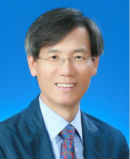 Jin-Woo Ahn
Jin-Woo AhnProfessor Department of Mechatronics Engineering, Kyungsung University, Korea Speech Title: Switched Reluctance Motor and Drives Abstract: Switched Reluctance Motor (SRM) is an electric machine that converts reluctance torque into mechanical power. In SRM, both its stator and rotor have a structure of salient-pole, which contributes to a higher output torque production. SRM has inherent advantages such as simple structure with no winding construction in rotor side, fail-safe, because of its characteristic which have a high tolerance, robustness, low cost with no permanent magnet in the structure, and possible operation in high temperatures or in intense temperature variations. The operating principle is based on the difference in magnetic reluctance between aligned and unaligned rotor position and when a stator coil is excited, the rotor experiences a force which will pull the rotor to the aligned position. Because SRM construction of doubly salient poles and its non-linear magnetic characteristics, the problems of acoustic noise and torque ripple are more severe than those of other traditional motors. The torque ripple is an inherent drawback of switched reluctance motor drives. This presentation covers some main aspects of switched reluctance motor(SRM) and drive technologies for industrial applications, which will introduce fundamental and advanced theories and technologies related to SRMs. Design examples of the motor, converters, control principles and schemes, recent R&D and applications are introduced. 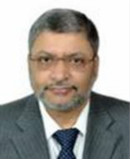 Mohamed Gadala
Mohamed GadalaProfessor of Mechanical Engineering, University of British Columbia, Vancouver, BC, Canada Chairman of Mechanical Engineering Speech Title: Journal Bearing Stability in Laminar & Turbulent Regimes Abstract: Linear and non-linear stability of a flexible rotor journal bearing system supported on short and long journals is studied for both laminar and turbulent operating conditions. The turbulent pressure distribution and forces are calculated analytically from the modified Reynolds equation based on two turbulent models; Constantinescu’s and Ng–Pan–Elrod. Hopf bifurcation theory was utilized to estimate the local stability of periodic solutions near bifurcating operating points. The shaft stiffness was found to play an important role in bifurcating regions on the stable boundaries. It was found that for shafts supported on short journal bearings with shaft stiffness above a critical value, the dangerous subcritical region can be eliminated from a range of operating conditions with high static load. The results presented have been verified by published results in the open literature. Dynamic coefficients of a finite length journal bearing are numerically calculated under laminar and turbulent regimes based on Ng–Pan–Elrod and Constantinescu models. Linear stability charts of a flexible rotor supported on laminar and turbulent journal bearings are found by calculating the threshold speed of instability associated to the start of instable oil whirl phenomenon. Local journal trajectories of the rotor-bearing system were found at different operating conditions solely based on the calculated dynamic coefficients in laminar and turbulent flow. Results show no difference between laminar and turbulent models at low loading while significant change of the size of the stable region was observed by increasing the Reynolds number in turbulent models. Stable margins based on the laminar flow at relatively low Sommerfeld numbers S≤0.05 were shown to fall inside the unstable region and hence rendering the laminar stability curves obsolete at high Reynolds numbers. Ng-Pan turbulent model was found to be generally more conservative and hence is recommended for rotor-bearing design. 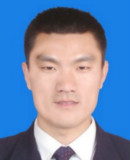 Chunguo Zhang
Chunguo ZhangProfessor School of Construction Machinery, Chang'an University, China Speech Title: Prediction on quasi-brittle fracture of materials with reliability specified by normal distribution Abstract: It is inevitable that fracture of brittle materials (e.g. ceramics and rocks) initiated from surface defect, crack or notch fluctuates significantly. Such fluctuations can contain crucial information on the inherent relations between the average grain size G and bulk mechanical properties such as the tensile strength ft and fracture toughness KIC. It was proposed that the characteristic crack a*ch = 0.25(KIC/ft)2 = 3 G, inspired by observations of strength distributions with different a*ch/G ratios. Using the relative characteristic crack a*ch/G ≈ 3, the mean and standard deviation (σ) were determined by normal distributions for both ft and KIC. Quasi-brittle fracture of materials based on the mean values and standard deviations can be thus predicted. The upper and lower bounds with 96% reliability (±2σ) specified by the normal distributions covered nearly all experimental data ranging from the strength-controlled to toughness-controlled asymptotic limits, and quasi-brittle fracture between the two. By re-examining the quasi-brittle fracture during three-point-bending tests, we find a remarkably good linear relation between the peak load Pmax and the equivalent area Ae, and the slope essentially render the intrinsic material property ft. The new findings, which also provide a simple methodology to predict fracture or failure of brittle materials, may have broad applications for precisely determining material properties such as ft and KIC.  Sergei Alexandrov
Sergei AlexandrovResearch Professor Beihang University, Beijing, China Speech Title:The Strain Rate Intensity Factor in Plasticity and Its Application Abstract: This research is motivated by numerous experimental observations that demonstrate that a narrow layer with drastically modified microstructure is generated near frictional interfaces. This layer is usually called white layer in papers devoted to machining processes and fine grain layer in papers devoted to metal forming processes. Two of the main contributory mechanisms responsible for the generation of such layers are: (a) the mechanism of rapid heating and quenching and (b) the mechanism of intensive plastic deformation. The latter can be described by means of the strain rate intensity factor. This factor is the coefficient of the leading singular term in a series expansion of the equivalent strain rate near maximum friction surfaces. This expansion shows that the equivalent strain rate is infinite at the friction surface. Therefore, the strain rate intensity factor controls the magnitude of the equivalent strain rate in its vicinity. A necessary condition for the existence of the strain rate intensity factor is the friction boundary condition in the form of the maximum friction law. This boundary condition is often adopted at the tool - chip interface (at least, over a portion of this interface) in machining processes. This zone is usually called the sticking zone. The existence of such zones has been reported in deformation processes as well. However, it is worthy of note that the actual seizure (the velocity vector is continuous across the interface) may or may not occur in theoretical solutions. It depends on the constitutive equations chosen. The present paper deals with an approach for using the strain intensity factor in constitutive modeling for predicting the evolution of material properties in a narrow layer in the vicinity of frictional interfaces. The theory developed is supported by experiment on extrusion of a magnesium alloy. 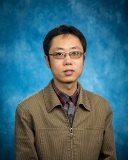 Thomas Yang
Thomas YangProfessor Electrical and Computer Engineering, Embry-Riddle Aeronautical University, USA Speech Title:Efficient Adaptive Signal Processing Techniques with Applications in Digital Beamforming Wireless Receivers Abstract: This talk presents two efficient adaptive signal processing techniques for co-channel interference suppression in digital beamforming Quadrature Amplitude Modulation (QAM) wireless receivers. The adaptive techniques are employed at the receiver’s baseband in the digital signal processor, and a time-varying weight update is automatically generated at each iteration during the adaptation process. The first method separately updates the real and imaginary parts of the weight vector along their respective gradient directions with distinctive optimum step sizes, while the second method directly updates the weight vector components as complex numbers. Both approaches aim at eliminating the choice of convergence factor in the adaptive filtering algorithm, and they are designed with the objective of minimizing the error signal in the next iteration to achieve fast algorithm convergence. Computer simulations are performed to validate the effectiveness of these efficient techniques. The simulation results confirm that, compared to the classic complex-valued Least Mean Square (LMS) algorithm, both techniques exhibit improved interference suppression performance. 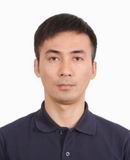 Hui Pan
Hui PanAssociate Professor Institute of Applied Physics and Materials Engineering, University of Macau, Macao SAR, China Speech Title: Hydrogen production from water Abstract: Hydrogen (abundant, clean and renewable) has been considered as one of the most important green energy sources to cater the increasing demand for energy in the future due to the limited supply of the old forms of depletable energy (coal, oil, nuclear) and their detrimental effects on the global climate. Water splitting has attracted increasing attention due to the versatile applications of hydrogen and oxygen gases. Generally, there are two ways for the water splitting, including solar-driven hydrogen production and electrical-driven electrolysis of water. In this talk, I will present our recent work on the hydrogen production using the two methods based on materials’ design and experiment fabrication, including including: (1) Design of photocatalysts for solar-driven hydrogen production. We will present a new concept on the engineering of electronic properties. (2) design and fabrication of two-dimensional (2D) transitional metal dichalcoginides as efficient electrocatalysts for electrical-driven hydrogen production. We showed that the catalytic performance of 2D MLs can be tuned by surface engineering. (3) design and fabrication of doped nanowires as efficient electrocatalysts. We found the doping can dramatically improve the efficiency. (4) Our first-principles design showed that the MXenes can be efficient electrocatalysts for electrolysis of water and co-catalyst in solar-driven water splitting. (5) graphitic carbon nitride with cocatalysts for solar-driven production. The approach enables the enhanced carrier mobility and electron-hole separation, and improved photocatalytic activity in the visible light region and thus offers immense potential for application in solar energy conversion, water splitting, and a variety of solar-assisted photocatalysis.  Ye Zhou
Ye ZhouIAS Fellow Institute for Advanced Study, Shenzhen University, China Speech Title: The development of flexible data storage Abstract: The next-generation electronic systems are expected to be light, flexible and portable for applications in large area displays, integrated circuits (ICs), organic light emitting diodes (OLEDs),radio frequency identification (RFID) tags, solar cells and so on. Memory is an essential part of advanced flexible electronic systems for data processing, storage and communication. Many types of memories such as ferroelectric, electret, resistive and floating gate have gained a great deal of attention due to the simple device structure, non-destructive read-out and controlled trap capacity. In this presentation, we will demonstrate recent works for flash memories and some novel memories.  Jian Zhang
Jian ZhangAssociate Professor Department of Mechatronics Engineering, Shantou University, China Speech Title: Open Interface Design and its Applications Abstract: Open interfaces can improve the product personalization using product functional modules developed by third party vendors. They also support the product update through the module upgrading or replacement during the product lifespan. By the comparison with traditional mechanical interfaces, in this talk, characteristics of open interfaces are firstly investigated. Methods are then introduced for the design, evaluation and operation of open interfaces. Open technology innovation and open business model can be supported by open interface design. Open interface design of both electric vehicle and light industrial equipment are proposed to satisfy personalized customer requirements. 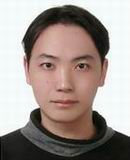 Wen-Cheng Lai
Wen-Cheng LaiAssistant Professor Department of Electronics Engineering, National Taiwan University of Science and Technology, China Speech Title: 3D Sensing Design and Applications Abstract: New depth-sensing tech is designed for virtual technology and face scanning. The proposed 3D sensing design for an iris-authentication and fingerprint applications. The FoV (Front of view) and resolution are very importance for this design. The proposed optical mechical-electronics solutions including stereo camera, time of flight and structured light. The head mount display solutions will discussion and presentation for VR/ AR and MR. |
Countdown
0
Days
Important Dates
Submission due: May 10, 2018
Conference date: May 26-28, 2018
Contact Us
Email: sec_zheng@icmeie.com
Tel: +86-13018056523
QQ: 2060402500
|
MEIE2018
International Conference on Mechanical, Electric and Industrial Engineering
---- Hangzhou, China, May 26-28, 2018
Copyright © International Conference on Mechanical, Electric and Industrial Engineering (MEIE 2018)









